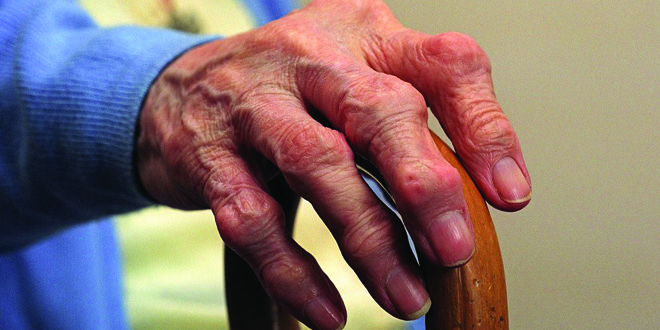
The relation between osteoporosis and menopause
Women are at a higher risk of developing osteoporosis and broken bones as they tend to have smaller, thinner bones than men. Estrogen hormone in women, that protects bones, decreases exponentially when women reach menopause, which can cause bone loss.
Osteoporosis is a debilitating illness of the bones, which increases the risk of unexpected fractures. Broken down, the word osteoporosis literally means ‘porous bone.’ An increased loss of bone mass and increase fragility of the bone makes them more prone to fractures. The disease often progresses without any symptoms or pain. Many times, osteoporosis is not discovered until weakened bones cause painful fractures usually in the back or hips.
Unfortunately, once you have a broken bone due to osteoporosis, you are at high risk of having another. And these fractures can be weakening. Fortunately, steps can be taken to prevent osteoporosis from ever occurring. Treatments can help slow the rate of bone loss.
Though the exact cause of osteoporosis is unknown, we do know how it develops. Your bones are made of living, growing tissue. An outer shell of the dense bone wraps a sponge-like bone. When a bone is weakened by osteoporosis, the “holes” in the “sponge” grow larger and more numerous, hollowing the inside of the bone. Until about age 30, the rate of bone development is greater than the rate of bone loss. After age 35, bone resorption overtakes bone buildup, which causes a gradual loss of bone weight and density. Once this loss of bone reaches a certain point, a person has osteoporosis.
Menopause is defined as the state of an absence of menstrual periods for 12 months. The average age of menopause is 51 years old. There is no way to predict when an individual woman will have menopause or begin having symptoms suggestive of menopause.
There is a direct relationship between the lack of estrogen after menopause and the development of osteoporosis. After menopause, estrogen, which a hormone that is present is large quantities in women and a little in men starts depleting. This causes imbalance between bone break-down and build up and bone resorption (breakdown) overtakes the building of new bone. Early menopause is the period before age 45. Any long phases in which the woman has low hormone levels and no or infrequent menstrual periods can cause loss of bone mass.
Important risk factors for osteoporosis include:
AGE
After maximum bone density and strength is reached (generally around age 30), bone mass begins to naturally drop with age.
GENDER
Women over the age of 50 have the greatest risk of developing osteoporosis. In fact, women are four times more likely than men to develop osteoporosis. Women’s lighter, thinner bones and longer life spans are some of the reasons why they are at high risk for osteoporosis.
RACE
Research has shown that Caucasian and Asian women are more likely to develop osteoporosis. Additionally, hip fractures are twice as likely to occur in Caucasian women as in black women. However, women of color are more likely to die after a hip fracture.
BONE STRUCTURE AND BODY WEIGHT
Petite and thin women have a greater risk of developing osteoporosis because they have less bone to lose than women with more body weight and larger frames. Similarly, small-boned, thin men are at greater risk than men with larger frames and more body weight.
FAMILY HISTORY
Heredity is one of the most important risk factors for osteoporosis. If your parents or grandparents have had any signs of osteoporosis, such as a fractured hip after a minor fall, you may be at greater risk of developing this disease.
Although osteoporosis can be prevented from ever occurring, there are some ways in which this disease can be treated such as hormone therapy, calcium and vitamin D supplements, weight-bearing exercises (which make your muscles work against gravity), injectable PTH to rebuild bone and other oral medications.
Dr Madiha Sadie, from Ziauddin University says, “Women should get their bone density checked during the perimenopausal years to prevent osteoporotic fractures from occurring.”

